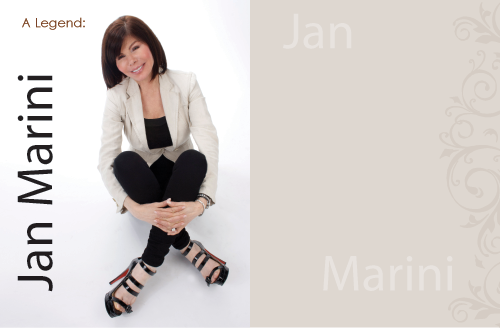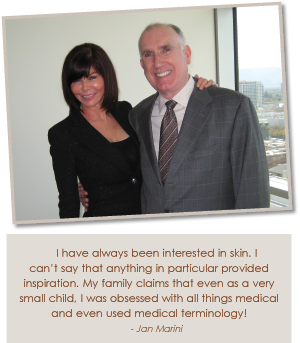How can you ensure that the newsletter you worked so hard to create is actually read by the recipients? If they delete it, all your work will go into the recycle bin. Even though e-newsletters are faster to create, cheaper to produce, and easier to distribute than print newsletters, they have to be well written and informative or you've wasted your time. Publishing an e-newsletter can easily become a gigantic headache, but there are a few tricks to making the whole process less stressful.
If you want your spa to reap the benefits of publishing an e-newsletter, consider the following tips for creating something that your clients actually want to read.
1. Consider Your Audience
Knowing your audience and understanding what information they are interested in reading is the first key to creating a successful e-newsletter, or any other publication. And knowing what your audience wants to read means you need to know who they are. If you're targeting your clientele, consider why they come to your spa in the first place. What demographic are you catering to? What are they looking for when they walk through your doors? What will make their life easier?
These factors will impact not only the content of your newsletter, but also the tone and style in which your information is presented. For example, busy moms may have different interests than vacationers, so you'll make decisions about what to include in the letter based on your readers' needs. Give this serious thought because your whole newsletter should reflect your understanding of your readers.
At first, you may not know if your newsletter is satisfying your readers. So always encourage feedback. Put your e-mail address or phone number in the newsletter with a note to contact you about content ideas and other suggestions. Ask your clients when they come into the spa whether or not they have been reading your newsletter, and ask them what they think. Let your clients know that you are looking for ways to improve, and they'll let you know exactly what they want to see.
2. Create a Format
Once you've established what interests your audience, next you need to determine your newsletter format. And format means two different things in the internet publishing arena.
First, format means the order in which your information is presented. You'll have to create a title, which can be something clever or something simple. It should reflect your newsletter's purpose. Whatever you choose, keep in mind that a good title will be memorable and will help reinforce your spa's brand.
Next, many successful newsletters, even short ones, start with a table of contents or bulleted list of items included within the e-mail. This makes navigation easy for your readers and lets them know what to expect. Then use subheads to separate your news items so they are clear and easy to find. Keep your paragraphs short, avoid fancy fonts, vary your sentence structure, and use white space to enhance readability. Also, incorporate bulleted or numbered lists to break up text wherever applicable. This is an easy way to highlight important information, such as a list of new services or a list of special events. Finally, always include your contact information in at least one place in the newsletter.
The second part of formatting has more to do with the appearance of your newsletter and what the readers see when they open the e-mail message. You have to decide if you want to send your newsletter as plain text or as HTML. HTML is more visually appealing, and if you want to include design elements like color, pictures, logos, charts, and graphs, then HTML may be the way to go. But designing and laying out an HTML newsletter is more time consuming than just a plain text e-mail, which can be easily written out in a word processing document and pasted into the body of an e-mail message. When deciding between plain text and HTML, consider your capabilities and your budget. You can always upgrade later, and the information your newsletter contains is far more important than the fancy graphics and design.
3. What to Include
The fun part of creating an e-mail newsletter is deciding what kinds of tips and information you want to include. Some typical newsletter elements include industry news, personal anecdotes from clients, useful tips, reviews of books or websites, new employees and services at your spa, articles and columns from you or other contributors, question and answer sections, upcoming events, surveys, and even promotions or special offers. Your content possibilities are endless. But again, the items you decide on should reflect your readers' interests.
The key is to present your newsletter as a resource packed with useful information, rather than a blatant advertisement for your spa. So with anything you write, especially promotional copy or descriptions of new services, describe all the benefits of what you can offer your clients, rather than touting your expertise. Many companies make the mistake of detailing their experience and reputation in attempts to win repeat clients. But this approach rarely yields the greatest results. If you want to get people interested in your spa, then you need to shift your message to how your services can benefit them.
Rather than describing all the wonderful things about your spa, describe all the wonderful results your clients will gain from your services. For example, if you want to sell your clients on a new facial service, then explain how much better it will make them look and feel. Or, if you have 20 years of experience, then tell them how they can rest easier knowing they are in the hands of experienced professionals. To really get people interested in your spa, tell them exactly how you can improve their lives.
Once you've determined what items work best for your newsletter, you won't have to start from scratch every time. If you decide to include three or four small items in each issue, you can start looking for ideas that fit within those categories long before you actually sit down to write. And before long, the newsletter will practically write itself.
4. Be Consistent
When creating a successful e-newsletter, you must pay attention to the details. And consistency plays an important role in a number of ways. First, any marketing material that you create should be grammatically correct and stylistically consistent. Your e-newsletter is no different. Take time to proofread your newsletter, and let someone else check it just in case you miss something.
When it comes to style, you can either create your own style guide, or use an industry standard, such as The Associated Press Style Book or The Chicago Manual of Style. These volumes will answer all your grammar questions and help you write consistent, professional copy. It doesn't really matter which style manual you choose, as long as you pick one and use it all the time. This will ensure that your numbers are always presented the same way, your punctuation is consistent, and your references are correct.
Another element of consistency is how frequently you publish your newsletter. A regular, monthly publication date will keep your clients' attention without pestering them. That schedule should give you enough time to put together a winning newsletter and prevent the publication process from becoming too time consuming. Your publishing time frame also helps build readership. If your newsletter is on target, your readers will look forward to finding it in their inbox month after month.
Creating Your Newsletter in the Future
Aside from considering your audience, having a clean format, and being consistent, the most important aspect of any successful e-newsletter is personality. Your newsletter should be a reflection of everything you do at your spa. Essentially, you're reaching out to your clientele and communicating with them even when they're at home or work or wherever. So hold your newsletter to the same high standards that make your spa successful.
Creating, publishing, and maintaining an e-newsletter that your clients will love is a challenge, especially if you're just starting out. And it may take you some time to develop what works for you and your readers. When you use these tips for creating an e-newsletter, you give the project some direction and boost your success.
Melinda Copp is a freelance copywriter based in South Carolina. She works with her clients to create written copy that reflects their personality and professionalism, and makes their marketing and publicity efforts a success. For more information about Copp and her services, visit her online at www.MelindaWrites.com. If you have any questions about how she can help you, send her an e-mail at This email address is being protected from spambots. You need JavaScript enabled to view it., or call her at 843-298-4757.





 Those who know Jan Marini refer to her as a visionary. While Jan might agree in principle, she sees this characterization as both a strength and a weakness. She envies those who are able to savor the moment. Where others view life in snapshots that capture real time, Jan sees broad borderless landscapes and endless possibilities. She does not see a product, she sees a business and in that same instance her mind is flooded with the business plan and all the accompanying details. Even when she is not envisioning empires, she is never satisfied with the status quo.
Those who know Jan Marini refer to her as a visionary. While Jan might agree in principle, she sees this characterization as both a strength and a weakness. She envies those who are able to savor the moment. Where others view life in snapshots that capture real time, Jan sees broad borderless landscapes and endless possibilities. She does not see a product, she sees a business and in that same instance her mind is flooded with the business plan and all the accompanying details. Even when she is not envisioning empires, she is never satisfied with the status quo.